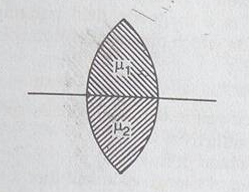Cosmic rays comes from
Sun
Other planets or outer space
Stratosphere
Both A and B
The correct Answer is:D
Step by step video, text & image solution for Cosmic rays comes from by Biology experts to help you in doubts & scoring excellent marks in Class 10 exams.
Related Playlists
- BOOK - CENGAGE BIOLOGYCHAPTER - ENVIRONMENTAL ISSUESEXERCISE - OLYMPIAD AND NTSE LEVEL EXERCISES9videos
ENVIRONMENTAL ISSUES
- BOOK - CENGAGE BIOLOGYCHAPTER - ENVIRONMENTAL ISSUESEXERCISE - CHALLENGING EXERCISE3videos
ENVIRONMENTAL ISSUES
- BOOK - CENGAGE BIOLOGYCHAPTER - ENVIRONMENTAL ISSUESEXERCISE - CONSOLIDATED EXERCISE8videos
ENVIRONMENTAL ISSUES
- BOOK - CENGAGE BIOLOGYCHAPTER - CO-ORDINATION THROUGH HORMONES : ENDROCRINCE SYSTEMEXERCISE - CHALLENGING EXERCISE3videos
CO-ORDINATION THROUGH HORMONES : ENDROCRINCE SYSTEM
- BOOK - CENGAGE BIOLOGYCHAPTER - EVOLUTIONEXERCISE - CHALLENGING EXERCISE5videos
EVOLUTION
Similar Questions
Sago comes from
View SolutionThe most energetic proton ever detected in the cosmic rays coming to Earth from space had an astounding kinetic energy of 3.0×1020eV (enough energy to warm a teaspoon of water by a few degrees).
How long does the trip take as measured in the reference frame of the proton?View SolutionA: The electrical. Conductivity of the Earth's atmosphere does not change with altitude.
R : Cosmic rays from outer space entering the earth's atmosphere do not affect it.View SolutionThe most energetic proton ever detected in the cosmic rays coming to Earth from space had an astounding kinetic energy of 3.0×1020eV (enough energy to warm a teaspoon of water by a few degrees).
Suppose that the proton travels along a diameter of the Milky Way galaxy (9.8×104ly). Approximately how long does the proton take to travel that diameter as measured from the common reference frame of Earth and the Galaxy?View SolutionThe most energetic proton ever detected in the cosmic rays coming to Earth from space had an astounding kinetic energy of 3.0×1020eV (enough energy to warm a teaspoon of water by a few degrees).
What were the proton's Lorentz factor γ and speed v (both relative to the ground-based detector)?View SolutionWhich of the following is true for rays coming from infinity ?
 View Solution
View SolutionWhich of the following is true for rays coming from infinity ?
 View Solution
View SolutionThe mean lifetime of stationary muons is measured to be 2.2000 μs. The mean lifetime of high-speed muons in a burst of cosmic rays observed from Earth is measured to be 20.000 μs. To five significant figures, what is the speed parameter β of these cosmic-ray muons relative to Earth?
View SolutionConsider a photon of continuous X-ray coming from a Coolidge tube. Its energy comes from
View SolutionCutoff wavelength of X-rays coming from a Coolidge tube depends on the
View Solution


